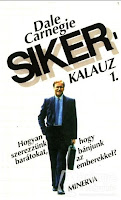Aesop was a slave in the sixth century, having a hunchback and suffering from a speech impediment, however quickly gaining his freedom through his unique intelligence, bright talent, and tactfulness.
From that time on he could freely travel, increasingly spreading (even with eminent minds of those times) his wisdom with others.
 As the Ambassador of the King Croesus at that time was often dedicated to complicated diplomatic missions, indeed resolving frequent conflicts, he did regularly turn to his didactic stories, which in those days were cascaded by word of mouth, even after several hundreds of years of his death, until an Athenian politician finally started to collect them. It may come as a surprise to think that a collection of ancient didactic fables written by a slave, could be such a refreshing and useful read even in today’s business life!
As the Ambassador of the King Croesus at that time was often dedicated to complicated diplomatic missions, indeed resolving frequent conflicts, he did regularly turn to his didactic stories, which in those days were cascaded by word of mouth, even after several hundreds of years of his death, until an Athenian politician finally started to collect them. It may come as a surprise to think that a collection of ancient didactic fables written by a slave, could be such a refreshing and useful read even in today’s business life!
The short booklet of these one-minute stories presents number of leadership challenges; about negotiation, workforce recruitment and dismissal, purchasing, marketing, company management and controlling. What is in this collection of stories so nicely linked from the ancient world to today’s modern days’ challenges? From everpresent human dilemmas, from the battle between good and bad to undeniable moral teachings – in other words an emphasis on the crucial ethical considerations ofbusiness life!
This book is even more interesting, including the commentaries of successful businessmen and public figures as a supplement to the teachings; for example written by Bill Gates, Colin Powell and Oprah Winfrey.
Hundreds of years of wisdom – in an easy to digest form. An entertaining travel mate on a flight trip, an anecdote based, stimulating collection of stories, an essential aid to starting up brainstorming when preparing a business case presentation!










